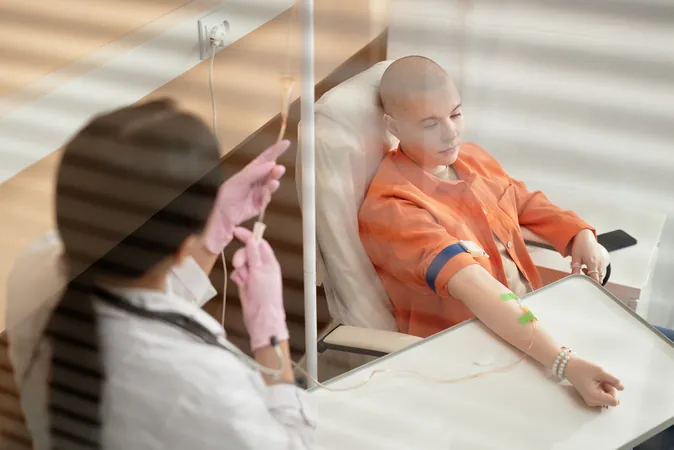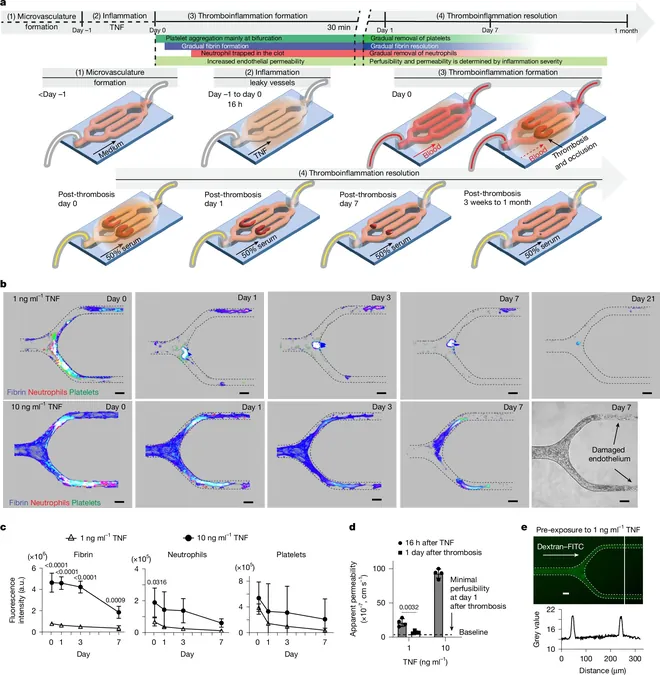
Groundbreaking Discovery: Reactive Oxygen Species Could Unlock Secrets of Chemotherapy Resistance
2025-03-31
Author: John Tan
Introduction
In the ongoing battle against cancer, one of the most puzzling challenges is understanding why certain tumors resist chemotherapy. A novel study has shed light on this issue, revealing that alterations in a specific protein linked to reactive oxygen species (ROS) may be pivotal in tumor resistance to treatment. Researchers have pinpointed mutations in VPS35, crucial for the ROS pathway, as a significant factor preventing chemotherapy-induced cell death.
Key Findings
The findings, published in the reputable journal *Nature*, highlight how these mutations can help identify tumors that are likely resistant to chemotherapy, a critical step towards more personalized treatment approaches. The research team was led by Junbing Zhang, PhD, from the Krantz Family Center for Cancer Research at Massachusetts General Hospital.
Reactive Oxygen Species: A Double-Edged Sword
ROS are molecules known to play dual roles in cellular processes. While low levels of ROS are necessary for normal signaling and the functioning of healthy cells, elevated ROS levels can cause cellular damage and contribute to the development of diseases, including cancer and neurodegenerative disorders. This dual nature makes ROS a double-edged sword in cancer therapies.
The Role of Mitochondria
Mitochondria, often dubbed the powerhouse of the cell, are integral in producing ROS. However, the interaction between ROS-sensing proteins and mitochondria has been poorly understood—until now. The researchers suggest that these interactions could significantly alter a cancer cell's response to various anti-cancer treatments.
The Challenge of Drug Resistance
Alarmingly, drug resistance accounts for more than 90% of mortality in cancer patients. The complexity of this resistance stems from multiple factors: enhanced drug efflux, genetic mutations, growth factors, heightened DNA repair mechanisms, and increased metabolic activity related to xenobiotics. By exploring the role of ROS in chemotherapy resistance, Zhang and his colleagues screened cancer cells to identify proteins that might play a role in rendering treatments ineffective.
Discoveries in VPS35 Mutations
Their investigation led to the discovery of two specific mutations in VPS35 that were linked to decreased ROS levels in cancer cells, enhancing their resistance to therapies. Further analysis of 24 patients with high-grade serous ovarian cancer showed a clear correlation: higher levels of VPS35 in tumors were associated with better treatment outcomes and increased overall survival rates.
Mechanisms of Resistance
The research demonstrates that when intracellular hydrogen peroxide modifies cysteine residues in VPS35, it disrupts the retromer’s interaction with endosomal membranes, leading to significant cellular changes. A critical aspect of their findings indicates that the localization of the retromer substrate SLC7A1 at the plasma membrane is essential for maintaining mitochondrial translation. Lowering VPS35 expression or oxidizing its ROS-sensing cysteines resulted in resistance to ROS-generating chemotherapies, such as cisplatin, specifically in ovarian cancer models.
Conclusion
This groundbreaking research places ROS in a new light, emphasizing their complex role in both healthy and diseased states. Liron Bar-Peled, PhD, the study's corresponding author, noted, "While we understand that ROS are vital in healthy and unhealthy cells, the pathways that regulate cellular ROS levels remain inadequately understood. Gaining a clearer picture of ROS will help unravel the reasons behind chemotherapy resistance in some patients."
Future Implications
As researchers continue to unravel the mysteries of ROS and chemotherapy resistance, this could open new avenues for targeted therapies, offering hope to millions of cancer patients worldwide facing this daunting challenge. Stay tuned for more updates on this exciting research!


 Brasil (PT)
Brasil (PT)
 Canada (EN)
Canada (EN)
 Chile (ES)
Chile (ES)
 Česko (CS)
Česko (CS)
 대한민국 (KO)
대한민국 (KO)
 España (ES)
España (ES)
 France (FR)
France (FR)
 Hong Kong (EN)
Hong Kong (EN)
 Italia (IT)
Italia (IT)
 日本 (JA)
日本 (JA)
 Magyarország (HU)
Magyarország (HU)
 Norge (NO)
Norge (NO)
 Polska (PL)
Polska (PL)
 Schweiz (DE)
Schweiz (DE)
 Singapore (EN)
Singapore (EN)
 Sverige (SV)
Sverige (SV)
 Suomi (FI)
Suomi (FI)
 Türkiye (TR)
Türkiye (TR)
 الإمارات العربية المتحدة (AR)
الإمارات العربية المتحدة (AR)